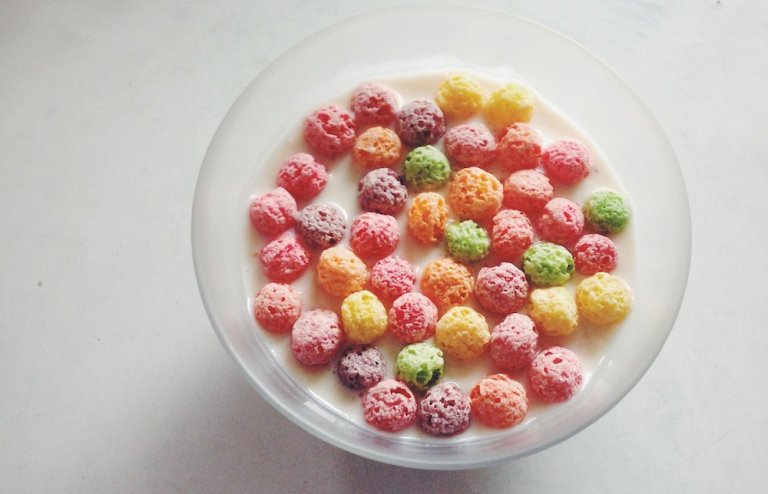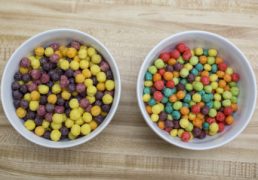
For all the plaudits disruptive innovation gets, it is easy to overlook how hard it is to achieve.
First of all, new ideas are not easy to develop. While it’s an exaggeration to say there is nothing new under the sun, it’s actually not that big of an exaggeration in the innovations realm. As a result, most of things that get billed as “epoch-making innovations” by pundits and their creators would, perhaps, be more fairly classified as incremental improvements on the same theme. The iPhone 8 springs to mind.
But, even if an innovator does come up with something revolutionary, or an incredibly better variation of the same theme, the hurdle he or she must clear is that of getting a consumer to fall in love — head-over-heels in love — so he or she drops everything and switches to that very cool new thing.
When it works, it is a beautiful thing to behold — the adoption of the original iPhone, for example. But, sometimes, the innovation just really whiffs.
There are zero people on planet Earth who are nostalgic for the days of New Coke. You know exactly two people who sprung for a Juicero. And, so, that brings us to this: the tragedy of the new version of a beloved kid’s breakfast food: Trix.
Following A Trend
Two years ago, the teams at General Mills had a brilliant idea about cereal: It should no longer include artificial flavors and colors. Americans — notably confronting an obesity epidemic — had shifted their eating habits away from the sugary, colorful things of the past and were looking for foods that were more organic, natural, local and, on the whole, more healthy. The cereal maker’s teams thought General Mills cereal products should reflect the changing tastes of the American consumer.
So, starting in 2016, General Mills undertook a project to purge all the artificiality from its offerings. There would be no more artificial flavors or colors for Americans who had just spent the last several years buying record-breaking amounts of kale. For some of the cereals in the stable — Cheerios, for example — there really wasn’t much change. What one buys today is largely identical to what one would have purchased a few years ago.
But other lines — like Trix — were very affected.
For those unfamiliar with the brand, Trix is a rainbow-colored cereal that punitively tastes like fruit and boasts a cartoon rabbit mascot. Trix’s bright colors were not originally naturally derived, so General Mills changed the dye to those based on natural juices and spice extracts — turmeric, annatto, radishes and purple carrots, for example. Some colors, like bright blue and bright green, had to be eliminated entirely, since they could not be recreated using natural ingredients.
The difference was noticeable, to say the least.

Down a Dead End Street
It was noticed, all right, but not in the way General Mills had hoped. The entire internet, collectively, groaned — and loudly.
The new hip, happening and oh-so-good-for-you all-natural Trix became known as “No, No, No, Trix,” “sad Trix” and “you destroyed my childhood Trix” across the literally millions of Tweets, Facebook posts and think pieces (yes, you read that correctly) that were written on the subject.
“That’s not ‘Trix’ cereal, that’s ‘Pranks’ cereal,” noted one Twitter user.
“Wow, Trix cereal has lost all its vibrancy, joy and optimism. What an apt metaphor for the millennial soul!” said another.
“[The] Rabbit isn’t even going to want Trix anymore. Rabbit gonna be WTF is this, gonna get me Fruit Loops in some proper colors,” yet another proclaimed.
And, after a year of being deluged with complaints, General Mills just gave up.
“Our Trix fans have been calling us, emailing us and reaching out to us on social media asking if we would consider bringing back the original formulation of Trix cereal with its vibrant colors,” said Mike Siemienas, spokesperson for General Mills, in a statement. “As a result, we are launching ‘Classic Trix’ to fill these consumer requests.”
Or, said a bit more directly:
“We’re simply listening to consumers, and these ingredients are not what people want in their cereal today,” noted Jim Murphy, president of the company’s cereal division.
And yes, Twitter was much happier with this news.
“I applaud this reversal by the makers of Trix cereal… The arc of history is long, but it bends towards justice,” one Twitter user remarked.
Um, sure.
The Moral Of The Story
Times are tough in breakfast food land, though possibly because it seems Americans are eating less cereal than they once did. Millennials don’t eat it nearly as much as their predecessors, and some data indicates it is because nearly half of them find cereal to be too burdensome a thing to prepare. Granola bars are easy, the theory goes, whereas pouring milk onto cereal smacks of effort. There is that bowl and spoon to wash, after all.
And, manufacturers have suffered for this change of taste. General Mills’ sales have been down 7 percent in 2017, and its rivals over and Kellogg’s have noticed a similar trend. Facing falling consumer interest, it makes sense the company made a move to update its product by making it more healthy. Walmart is selling organic food these days, and everyone’s favorite food trend still seems to be “all-natural organic.” What better way to jump start a new generation’s enthusiasm for cereal?
Just one problem that perhaps the folks at General Mills didn’t consider: A person buying Cheerios might care about his or her health. In fact, the ad campaign that showed it had been linked to a drop in cholesterol did see an accompanying rise in sales.
But, a person buying Trix — a rainbow-colored cereal with a cartoon rabbit on the box — might not be primarily guided by health concerns at the time of the purchase. That person might be a lot of things — a child, the parent of a child trying to head off a grocery store tantrum, having a real tough day, in need of an ice cream topping or nostalgic for their childhood days when breakfast was a huge bowl of the artificially colored breakfast food topped with a banana, for starters.
Whatever the reason, people who purchase Trix likely aren’t thinking about maximizing their nutrition.
If they were, they wouldn’t be buying “Classic” Trix at all, and that’s why they turned their backs on what was billed as the “new and improved version,” the thing they were supposed to want.
Sometimes consumers really do know what they want, and when they do, it makes sense to give it to them.